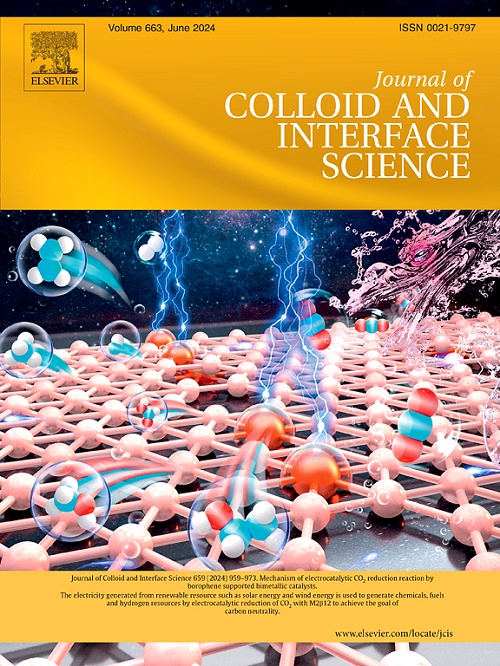Synergistic vanadium carbide/oxide heterostructures within layered carbon for enhanced lithium–sulfur battery performance
IF 9.4
1区 化学
Q1 CHEMISTRY, PHYSICAL
引用次数: 0
Abstract
Lithium–sulfur (Li–S) batteries hold great promise due to their high theoretical energy density, but their practical application is impeded by the insulating nature of sulfur and the shuttle effect of soluble lithium polysulfides. Herein, we report the synthesis of vanadium carbide/oxide heterostructures embedded in a two-dimensional carbon matrix (VC/V2O3@C) through a facile topological transformation strategy to address these challenges. The synergistic heterostructure combines strong polysulfide adsorption capability with excellent redox activity. In situ Raman spectroscopy reveals that the VC/V2O3@C composite significantly accelerates polysulfide conversion and suppresses the shuttle effect. As a result, Li–S batteries utilizing VC/V2O3@C exhibit a high discharge specific capacity of 1281 mAh g−1 at 0.5 C and excellent cycling stability with a low capacity decay rate of 0.045 % per cycle (1200 cycles) at 1 C. Even under high sulfur loading and lean electrolyte conditions, impressive areal capacities are achieved. This work demonstrates a novel approach to enhancing Li–S battery performance through synergistic heterostructure design.

层状碳内的碳化钒/氧化物异质协同结构可提高锂硫电池性能
锂硫(Li-S)电池因其理论能量密度高而前景广阔,但由于硫的绝缘性和可溶性多硫化锂的穿梭效应,其实际应用受到阻碍。在此,我们报告了通过简便的拓扑转化策略合成嵌入二维碳基质(VC/V2O3@C)的碳化钒/氧化物异质结构,以应对这些挑战。这种协同异质结构兼具强大的多硫化物吸附能力和出色的氧化还原活性。原位拉曼光谱显示,VC/V2O3@C 复合材料可显著加速多硫化物的转化,并抑制穿梭效应。因此,使用 VC/V2O3@C 的锂-S 电池在 0.5 摄氏度时的放电比容量高达 1281 mAh g-1,而且循环稳定性极佳,在 1 摄氏度时的容量衰减率低至 0.045 %/次(1200 次循环)。这项工作展示了一种通过协同异质结构设计提高锂-S 电池性能的新方法。
本文章由计算机程序翻译,如有差异,请以英文原文为准。
求助全文
约1分钟内获得全文
求助全文
来源期刊
CiteScore
16.10
自引率
7.10%
发文量
2568
审稿时长
2 months
期刊介绍:
The Journal of Colloid and Interface Science publishes original research findings on the fundamental principles of colloid and interface science, as well as innovative applications in various fields. The criteria for publication include impact, quality, novelty, and originality.
Emphasis:
The journal emphasizes fundamental scientific innovation within the following categories:
A.Colloidal Materials and Nanomaterials
B.Soft Colloidal and Self-Assembly Systems
C.Adsorption, Catalysis, and Electrochemistry
D.Interfacial Processes, Capillarity, and Wetting
E.Biomaterials and Nanomedicine
F.Energy Conversion and Storage, and Environmental Technologies

 求助内容:
求助内容: 应助结果提醒方式:
应助结果提醒方式:


